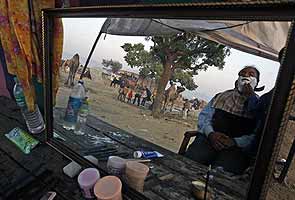According to a report appearing the Economic Times (Mumbai, Oct. 4, 2013), “India Inc’s rural champions have probably never had it so good.” A good monsoon is seen as having “kindled hopes of a turnaround in demand for key products”.

A Hero SPLENDOR-NXG. Photo courtsey: Hero Motocorp
The ET report citing an unnamed study by the Deutsche Bank says: “At a time when the rest of India Inc is either groaning under heavy debt or struggling to sell in a sluggish market, companies with heavy rural focus are literally licking their lips in anticipation of a surge in demand in India’s villages and towns. Already, two-wheeler sales are inching up, tractor sales are booming and banks are hiring employees in far-flung regions, hoping to benefit from a monsoon that has increased the kharif area by 5% and water reservoir levels by 15%.”
The 7 firms examined in the study are Hero Motocorp, Emami, Maruti Suzuki, Mahindra & Mahindra, M&M Fin Services, and ITC. All of these companies can be regarded as champions in having mastered the “frugal challenge“.



